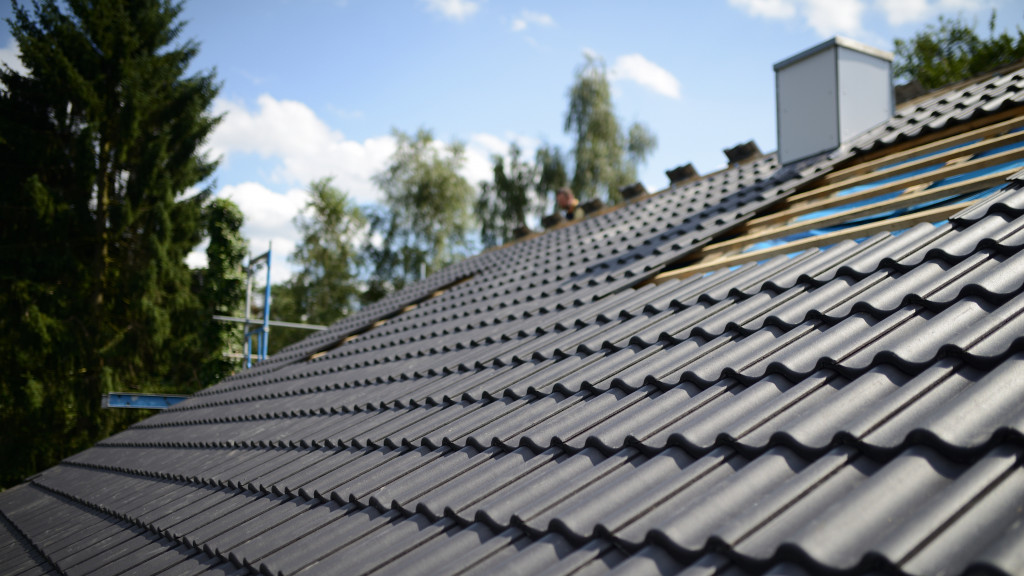When you’re planning with roofers and asking them about your roof’s dimensions, they’ll usually use terms like pitch, cornice, counterflashing, flashing, and a variety of different words that’s most people are not familiar with. Most of the time, this can be confusing when you’re planning your home and can cause miscommunication.
If you’ve noticed, homes placed in warmer areas of the country tend to have lower-sloped roofs compared to roofs that have a steep slope from colder regions. Why is that? Well, there’s a reason for that design. Distinguishing a sufficiently pitched roof, a low-pitched ceiling, and a steep roof can help with how you will design your home while maximizing both functionality and durability.
Some homes will opt to have lower-pitched roofing since they have more space for other equipment, such as HVAC. Other times, families want to optimize their home against cold weather conditions and rain, which usually means
But at the end of the day, several factors need to be taken into account when planning.
How Do You Calculate Pitch?
But before we discuss which one is a better material for your roof, we have to know what a pitch is. We also have to discuss what type of weather conditions will work with what kind of slope.
Generally, all roofing contractors situated in the United States will have a universal measuring system for measuring the pitch. Measuring the rise of a roof is relatively simple.
A roofer may tell you that a roof is 6/12. That means that for every 12 inches that’s traversed on it, there is a gradual elevation of 6 inches. The first number will represent the vertical inclination while the second number will refer to the inches.
Typically, a conventional gable-shaped roof used for suburban areas will have a pitch of around 6/12, while anything that’s below 4/12 is considered a low-pitched roof. Contrary to what most people think, a flat roof isn’t entirely flat, but will have a pitch of around 0.5/12 or 1/12; this ensures that water is filtered towards the right drainage system.
High-Pitched Roofs

- Water Doesn’t Pool — Naturally, every type of liquid will trickle down to the lowest area because of gravity. Having a steep roof can help redirect water into gutters or a downspout. If you don’t have a gutter system, it’s essential to know where your water is being disposed of. If you’re living close to the shore, seawater is known for eroding concrete, so you might have to get some concrete repairs if you’re disposing of water being blown by high winds.
- Great For Storage — Most of the time, warehouses will have low-pitched roofing since it has a fair amount of square footage. In reality, having higher pitched roofing is better in extending the life expectancy of products and food.
- Impact-resistant and durable — The central premise of using high-pitched roofing in areas that get hailstorms is that there’s less surface area exposed to hail. Since there’s less area that’s being hit, higher-pitched roofing tends to have longer lifespans.
- Snow and rain resistant — Gravity has a significant influence on how snow and rain will slide off your roof. ; Most of the time, roofs will need snow guards since an accumulating amount of snow could put stress on the support beams when it’s sliding down, so it’s best to regulate the amount of snow that’s sliding off.
Low-Pitched Roofs
- Accessible — Compared to steeper roofs, having a lower-pitched roof is more convenient for maintenance personnel. That means that the chances of getting injured aren’t as high as being on steep roofs.
- Practical for HVAC — Low-pitched roofing and flat rooftops are great for HVAC equipment, especially for apartments and offices that need a great deal of heating, air-conditioning, and ventilation.
- Saves Energy — A low-pitched roof is an excellent choice for placing solar panels on your top. It helps with decreasing energy consumption.
- Great for large buildings — Most of the time, warehouses and large buildings will have a fair amount of square footage. It would be counter-productive on using steep roofs on large warehouses and depots.
Just like when you’re looking for building materials, each type is designed for a specific purpose. Both low-pitched rooftops and high-pitched roofs have their unique characteristics and advantages.
It’s also worth noting that your building’s function will also influence your roofing style. Is the building used for storage? A high-pitched roof can help extend the shelf life of food and consumer products.
Ultimately, the pitch of your roof will be determined by the weather. If you look closely at homes located in colder regions, you’ll notice that they’ll use steeper-pitched ones while most homes situated in dried areas will use lower-pitched roofs and flat rooftops. When you’re planning for yours, it’s best to weigh-in on the advantage that it can give to your home.

